|
R.L. Drake Company During World War Two
Dayton, OH
1943- Early 2000 era
This page added 5-18-2023.
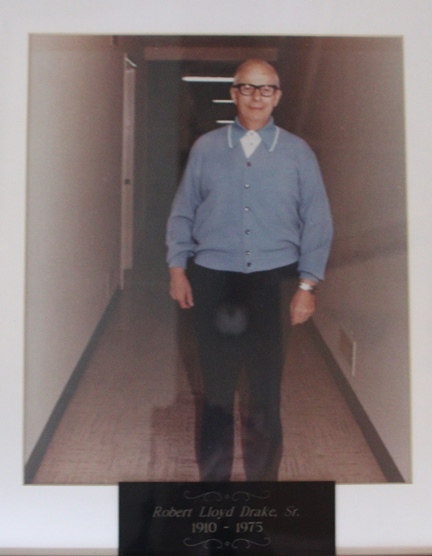
Mr. Robert Lloyd Drake Sr. founded the
company with his name in 1943 to provide electronic equipment to help
win World War Two. Although a brand new company in an industry
that was dominated by several large radio and electronics firms, the
R.L. Drake Company was still awarded three major contracts by the Army
Signal Corps. The three contracts totaled $377,000.
Mr. Drake had previously held several
electrical engineering jobs with companies in the Dayton, OH area after
graduating from the University of Cincinnati during the Great
Depression. While working at these companies, he began the
development and manufacture of band pass filters at home in the
evenings. He sold these to radio amateurs, like himself, to
prevent stray signals from entering their receivers. The use of
band pass filters was an innovative idea of Mr. R.L. Drake and was the
foundation of the new company he opened in Dayton, OH in 1943.
After World War Two, the R.L. Drake Company became a leader in
innovative and cost effective communications equipment for amateur radio
operators.
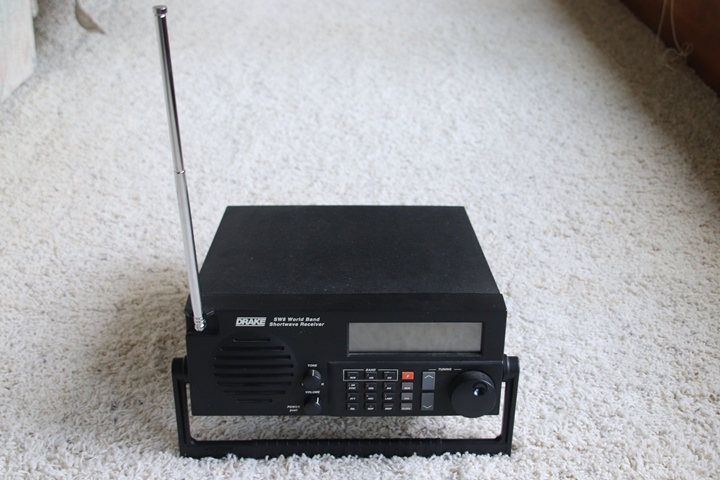
I have my own personal connection to the R.L. Drake Company as I own a
Drake SW8 world band shortwave receiver. I have been a casual
shortwave listener ever since I built my first Knight-Kit receiver in
junior high school. I have owned and built several types of
shortwave receivers since that time, but in the 1990s I became aware
that the R.L. Drake Company was now producing shortwave receivers along
with the amateur radio equipment. I knew of the excellent
reputation of the R.L. Drake Company and purchased this SW8 at a ham
fest.
R.L. Drake Company's World War Two
Products: As noted above, the R.L Drake Company had three
major contracts during the last two years of World War Two. These
were contracts with values over $50,000 so the company could also have
had other undocumented contracts for less than this value.
Table 1 - R.L. Drake's
Major World War Two Contracts
The information below
comes from the "Alphabetical Listing of Major War Supply
Contracts, June 1940 through September 1945." This was
published by the Civilian Production Administration, Industrial
Statistics Division. |
|
Product - Customer |
Contract Number |
Contract Amount |
Contract Awarded
Date |
Completion
Date |
| Radio Monitors
BC1255 - Army Signal Corps |
33042-SC-676 |
$70,000 |
1-1944 |
5-1944 |
| Radio
Filters - Army Signal Corps |
33042-SC-1863 |
$80,000 |
9-1944 |
12-1944 |
| Detector
Sets PRS2 - Army Signal Corps |
33039-SC-26800 |
$227,000 |
6-1945 |
12-1945 |
| Total |
|
$377,000 |
|
|
BC-1255 Heterodyne VHF Monitor:
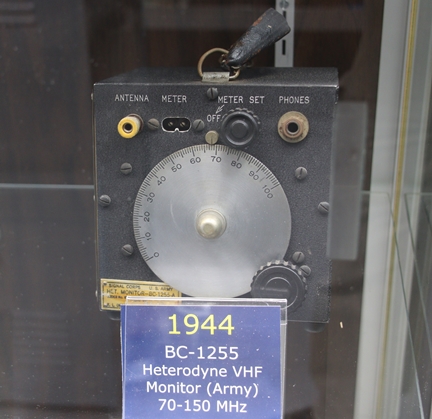
R.L. Drake built the BC-1255 Heterodyne VHF
Monitor built under license under Army Signal Corps contract 33042-SC-676.
This three tube radio had one 958 and two 2-1S5 tubes. This rare
example of the first radios built by the R.L. Drake Company is part of a
large and excellent display of Drake radios at the National Voice of
America Museum of Broadcasting in West Chester, OH. Author's
photo.
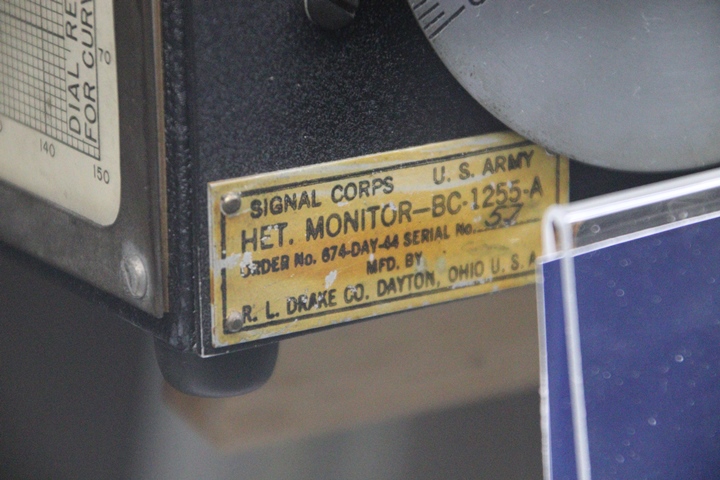
This example is serial number 57. I
have only been able to find evidence of two other examples of this
radio. One is serial number 484 and the other is 543. It is
unknown how many BC-1255s the company produced for the war effort.
Author's photo.
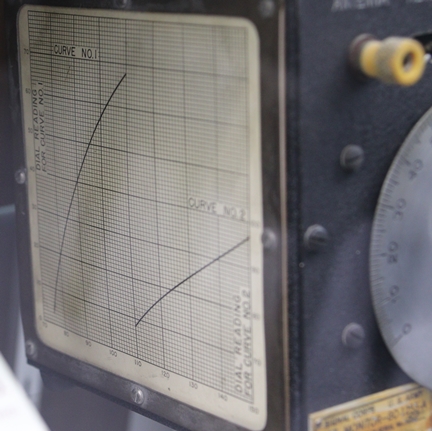
Author's photo.
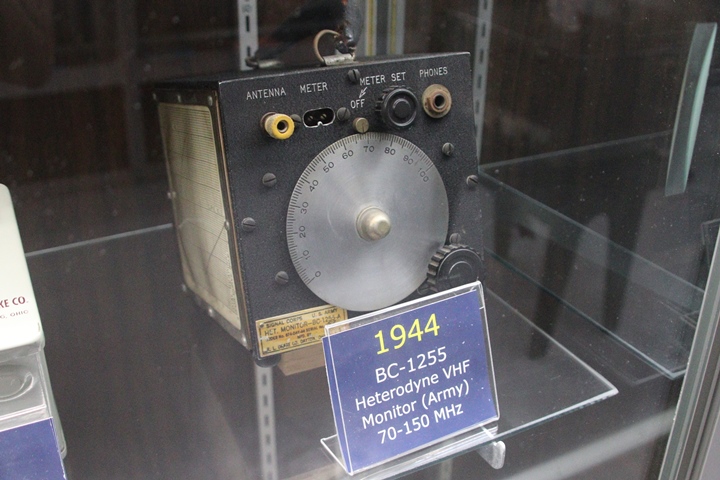
Author's photo.
F-15/U Band Pass Filter:
There is very little documentation of this
device. It appears that these were used in army radios to prevent
jamming by the German military in Europe and was built under contract 33042-SC-1863.
AN-PRS-2 Non-Metallic Mine Detector: As with the F-15/U
band pass filter, information on the AN-PRS-2 is extremely limited.
This was part of a series of mine detectors produced late in the war
used to find non-metallic enemy mines. There is no documentation
nor photos of the AN-PRS-2. Shown below is a World War Two era
AN-PRS-1. The AN-PRS-2 was most likely similar yet more advanced
version of the AN-PRS-1.
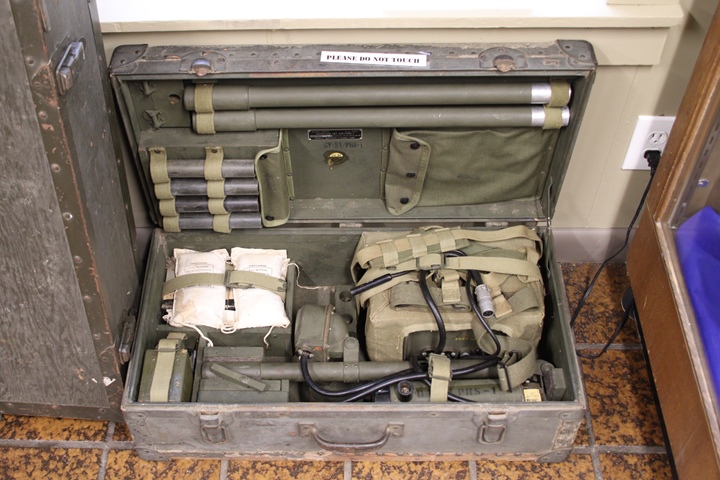
This complete Federal Telephone and Radio Corporation-built AN-PRS-1
non-metallic mine detector is on display at the Central Ohio Military
Museum in Harrisburg, OH. The AN-PRS-1 was designed to detect
anti-tank mines to a depth of 7.5 inches below the surface of the
ground. Author's photo.
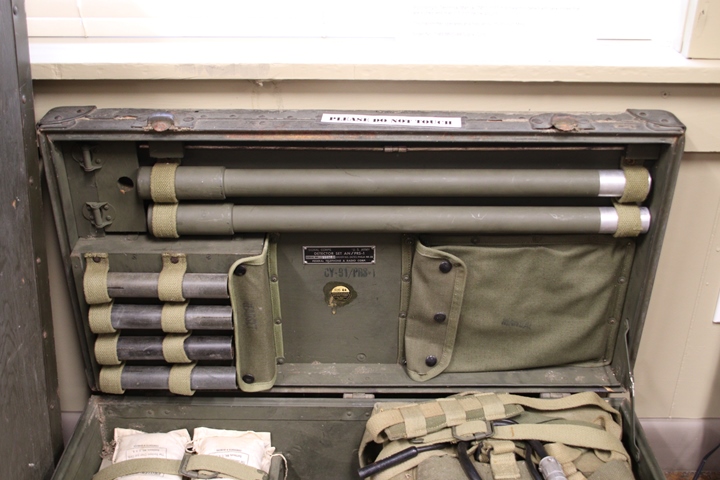
Author's photo.
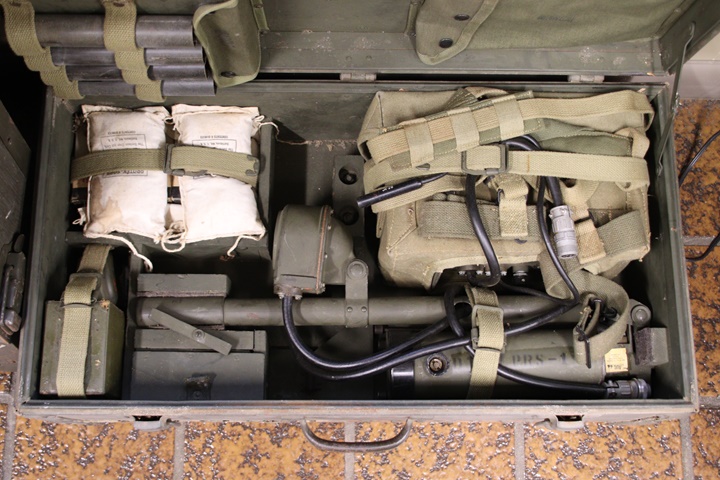
Author's photo.
Post-World War Two Era Products:
The following series of photos are from the
excellent collection of R.L. Drake Company products on display at the
National Voice of America Museum of Broadcasting.
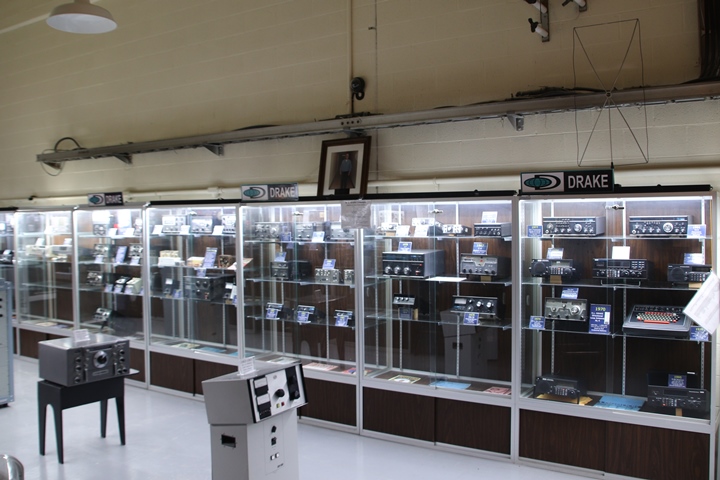
The museum has a wall of one of its display
rooms dedicated to Drake communications equipment. By default,
this is an R.L. Drake Company museum within a museum. Author's
photo.
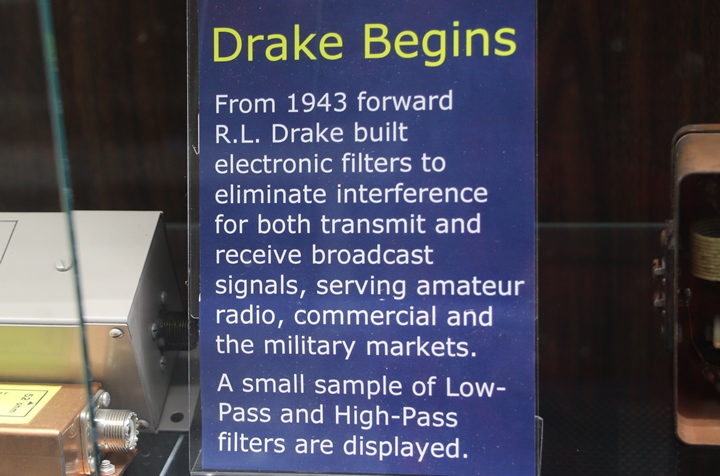
Mr. Drake was a leader in the development of
electronic filters. While there are no World War Two era filters
on display at the museum, the filters below show that they consisted of
inductive coils. Author's photo.
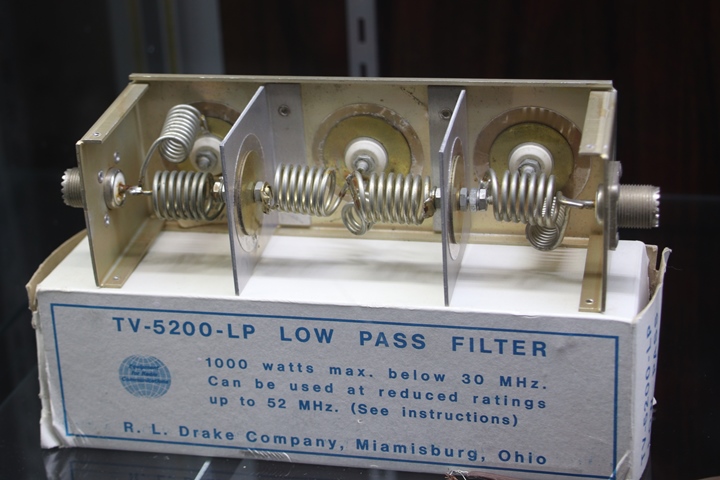
Author's photo.
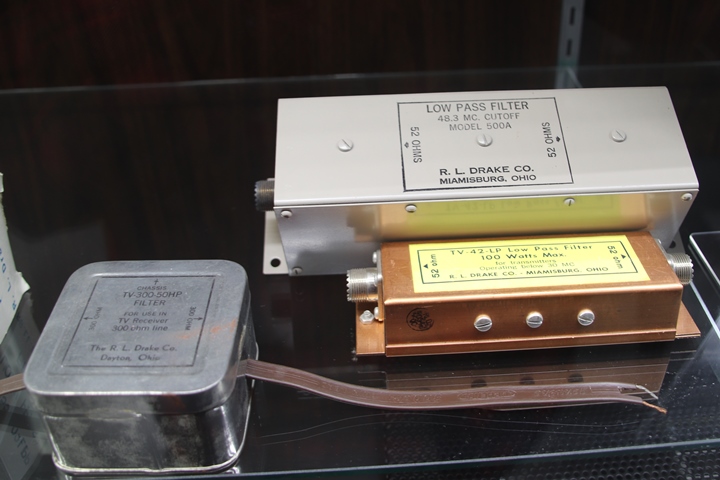
Author's photo.
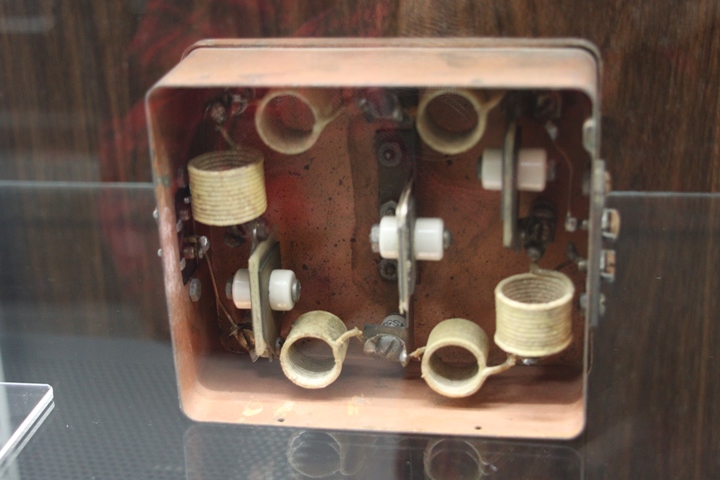
Author's photo.
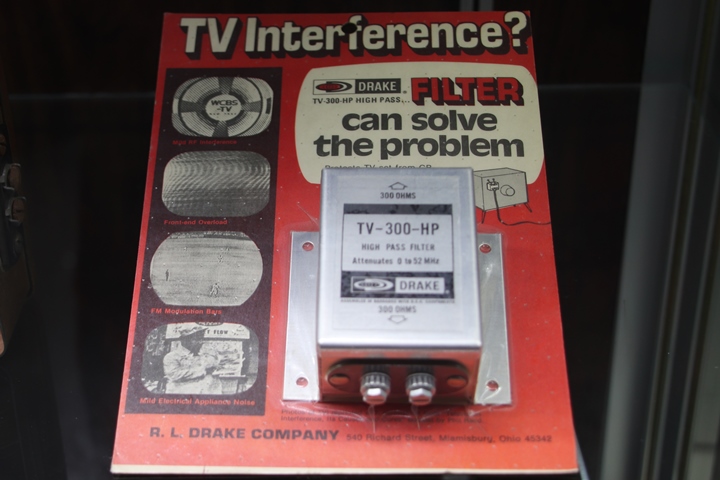
Author's photo.
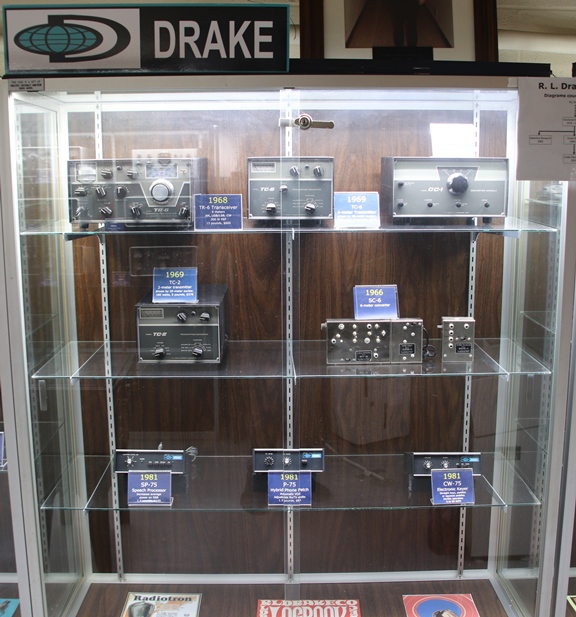
Author's photo.
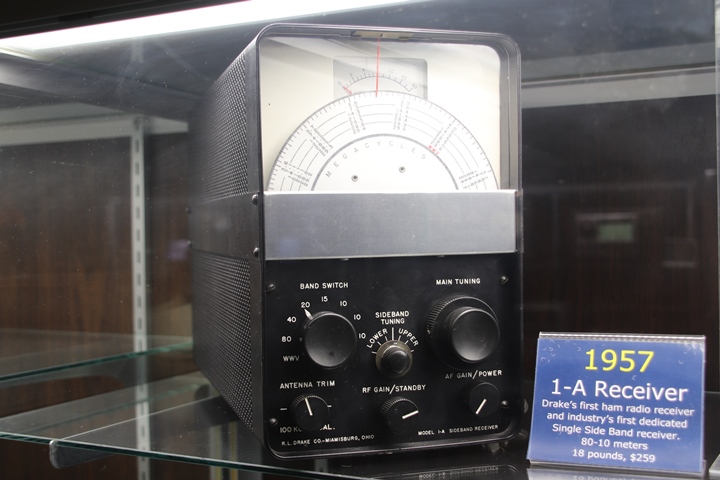
This is the company's first amateur radio.
The first ten 1-A receivers were assembled in the Baum Opera House in
Miamisburg, OH.
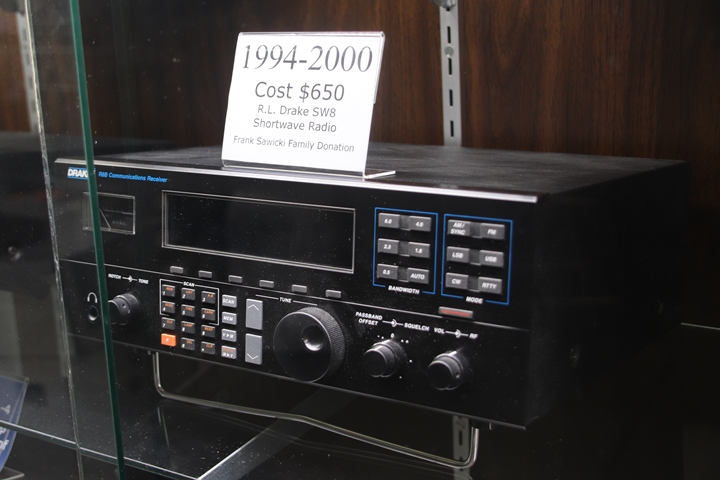
This item is misidentified by the museum.
It is an R8B communications receiver and was the last of the long line
of radios from the company. These are highly sought after and
command a significant price to purchase. Author's photo.
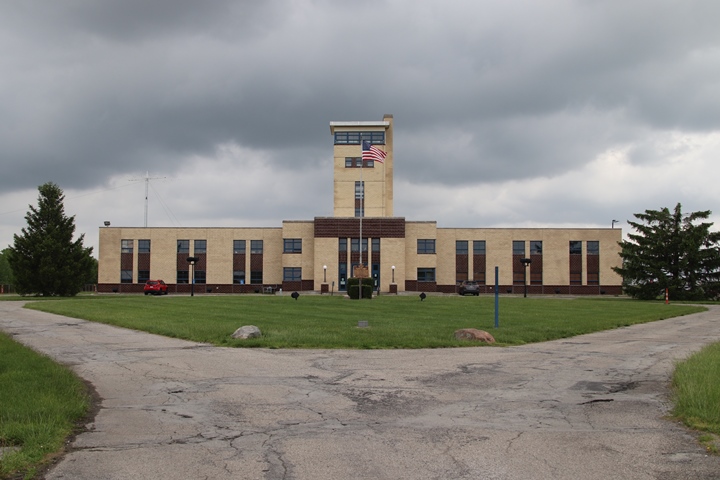
This is the National Voice of America Museum
of Broadcasting in West Chester, OH. This building has its own
important World War Two story. It was from here that the United
States broadcasted news, both good and bad, to overseas listeners in
countries occupied by Germany. This museum has a significant
amount of radio history displayed in it. It is well worth the
visit by those interested not only in radios, but how the Voice of
America helped win World War Two. Author's photo.
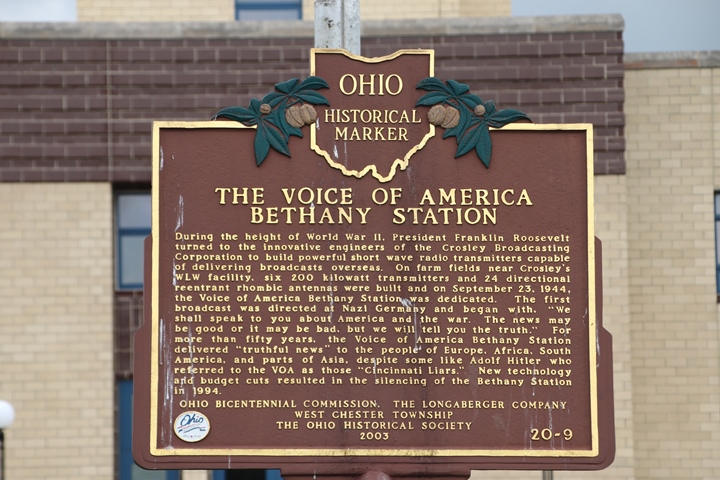
Author's photo.
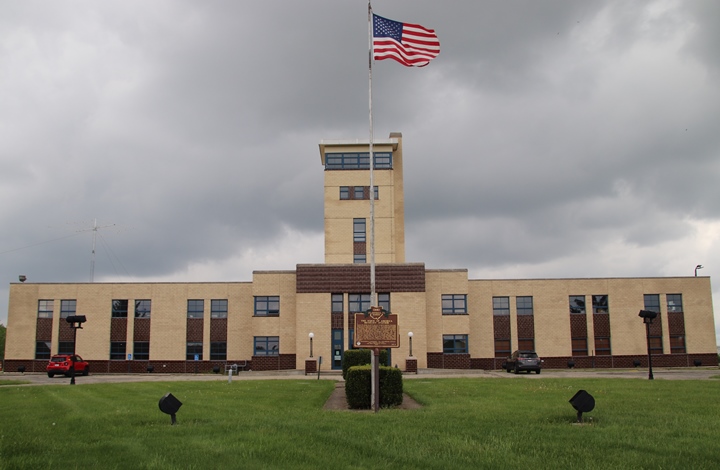
Author's photo.
The R.L. Drake Factories:
The company was located in three different
plants and one opera house during its lifetime. The company
started in Dayton, OH during World War Two and remained there until
1958. It then moved to Miamisburg, OH which is several miles south
of Dayton. Its next plant, which was built by the company for the
express purpose of manufacturing communications equipment, was in
Franklin, OH, which is one-third of the way from Dayton south towards
Cincinnati, OH. In the end, a company identified as R.L. Drake
Holdings was located in a small office complex in Springboro, OH.
This is less than three miles north of former Franklin, OH plant. R.L. Drake
Holdings appears to have gone out of business.
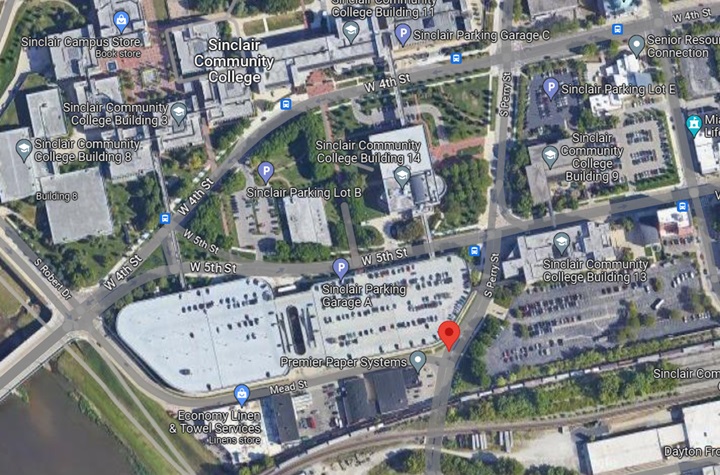
The company's first plant was at 15
Longworth Street in Dayton, OH. This area has been redeveloped
since R.L. Drake Company occupied its first factory at this location
during World War Two and into the 1950s. It is now part of the
Sinclair Community College complex in Dayton. Image courtesy of
Google Maps.
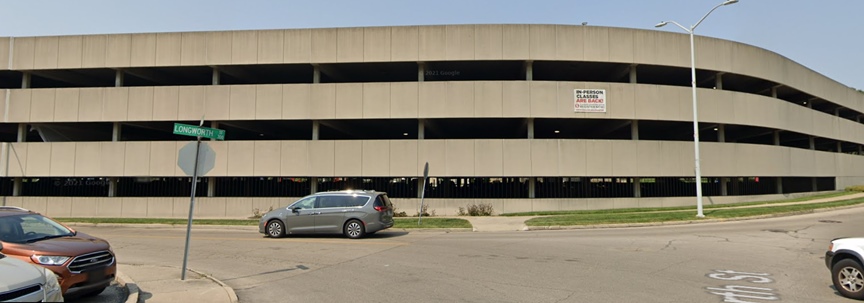
The location of the former Drake plant is
now a parking garage. Image courtesy of Google Maps.
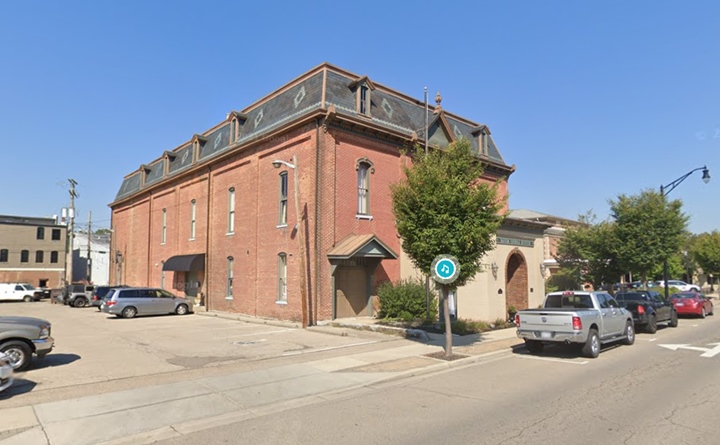
The R.L. Drake Company occupied the Baum Opera House in Miamisburg, OH
for a short period in 1957-1958. The first ten 1-A receivers were
built here before the company moved to the plant on Richards Street in
Miamisburg. Image courtesy of Google Maps.

This Google Maps street view shows the
former location of the R.L. Drake Company plant at 540 Richards Street
in Miamisburg, OH.
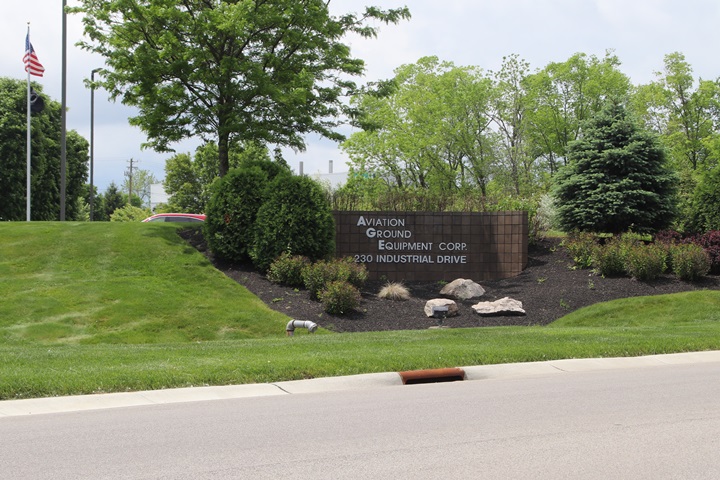
The R.L. Drake factory address in Franklin,
OH was at 230 Industrial Drive. This is located in an industrial
park just east of I-75. The facility has found a new owner since
the demise of R.L. Drake Company. Author's photo.
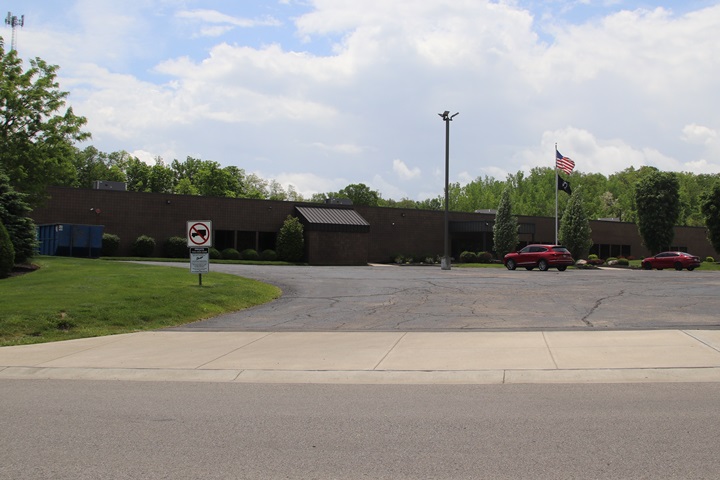
This plant was built in three phases as the
company expanded and needed more space. The first phase of 42,500
square feet was completed in 1978. It housed the machine shop,
printed circuit board operation, and the component and final assembly
lines. The office staff and engineering, sales, and service
departments initially remained at the Miamisburg plant. Not only
did Mr. Drake design excellent radio equipment, but he made sure his new
factory was not only functional but also looked good. This is the
best looking factory in the industrial park. Author's photo.
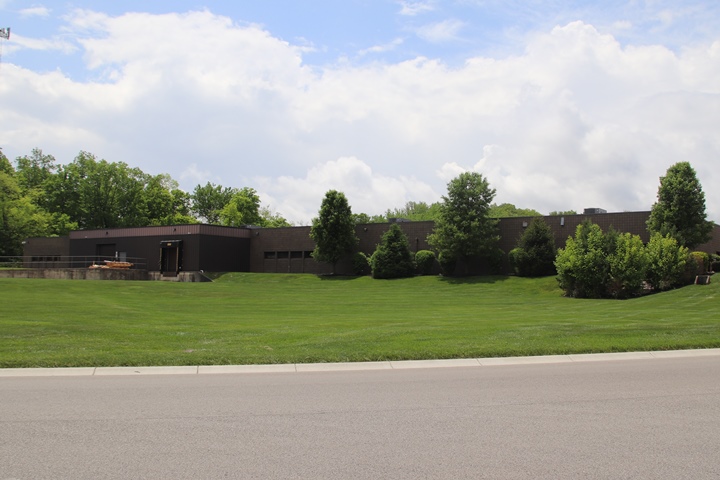
This is the right side of the building with
respect to the front shown above. Author's photo.
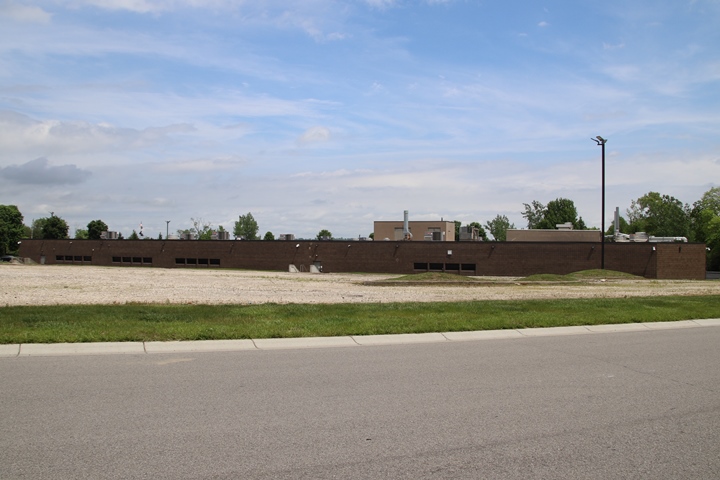
This is the left side of the building.
Author's photo.
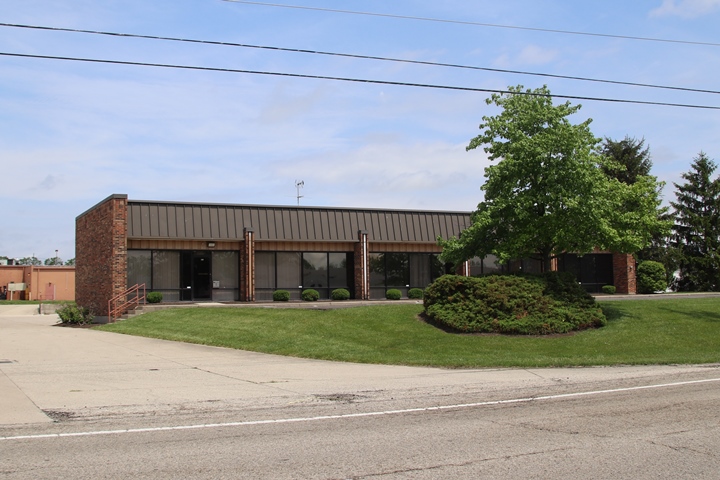
This is the last known location of a company
bearing the name R.L. Drake. This was were R.L. Drake Holdings was
located. The address is 710 Pleasant Valley Drive, Springboro, OH.
Author's photo.
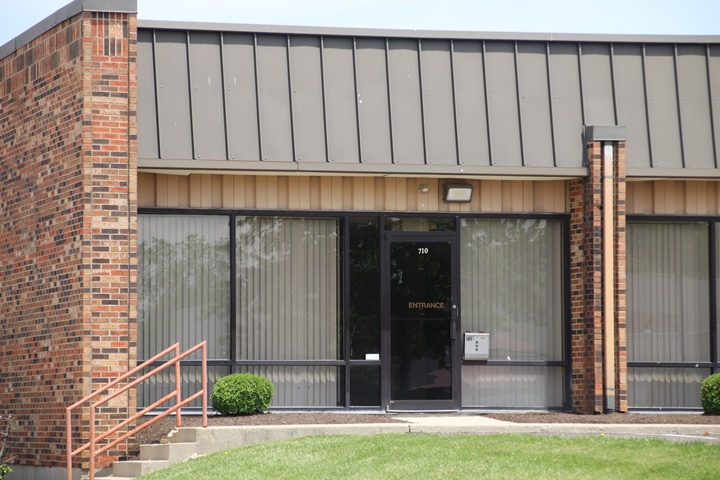
710 Pleasant Valley Drive is the last
storefront on the left end of the building. There is no name on
the door and the inside is empty. This is such a sad end for such
a dynamic company that built leading edge radio amateur radio equipment
for approximately sixty years in west central Ohio. Author's
photo.
|






























